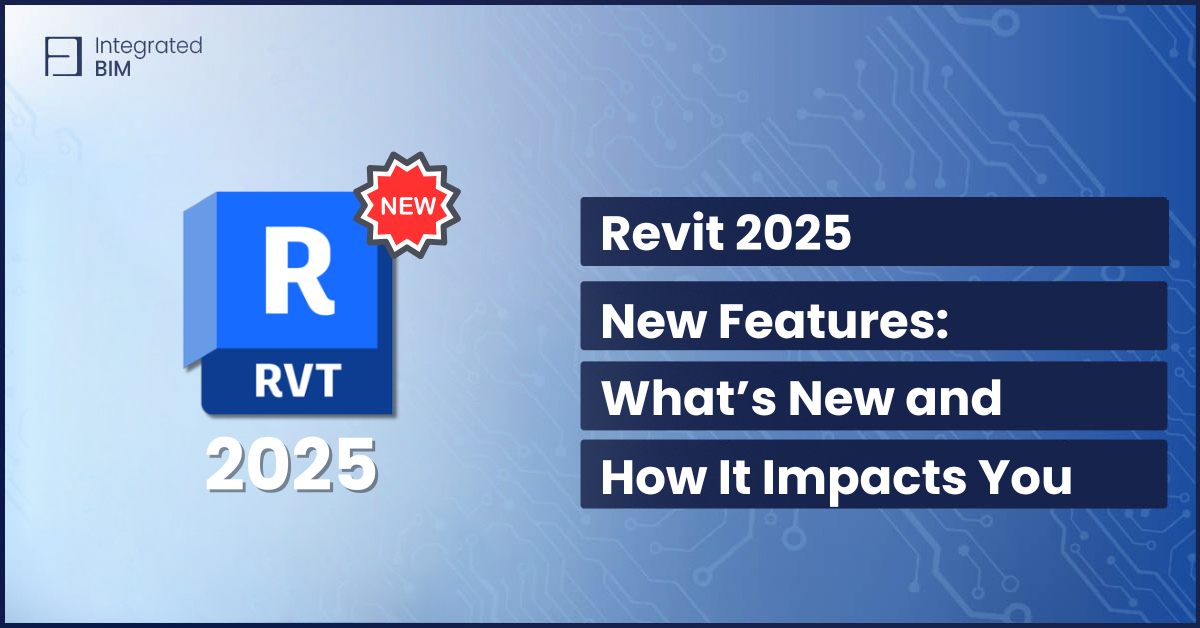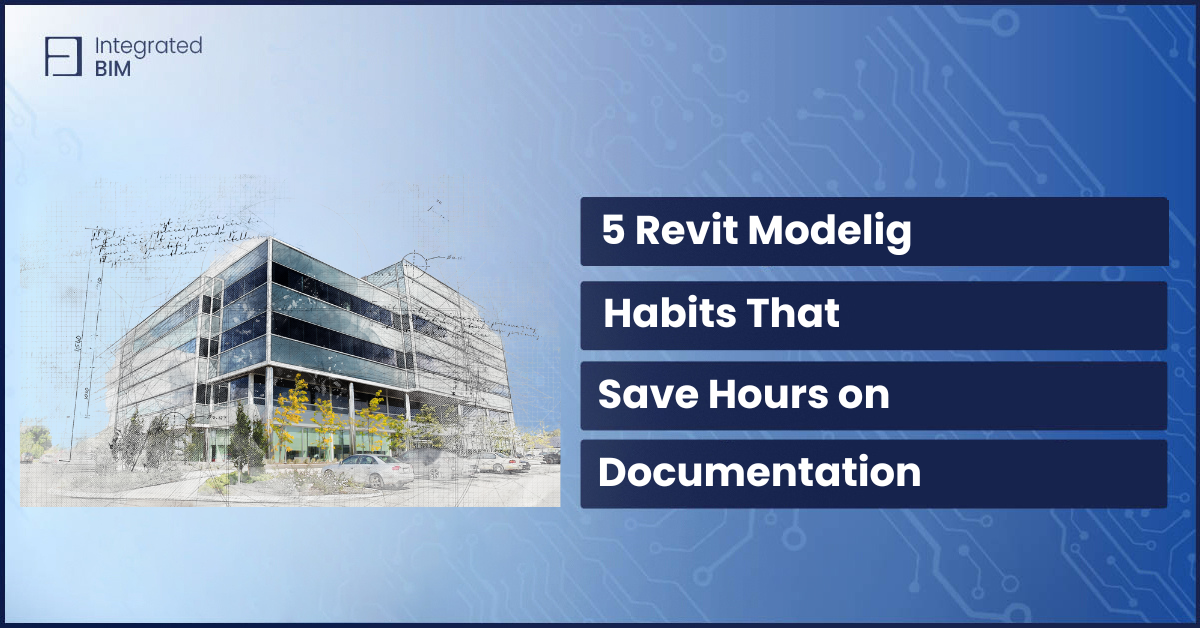In the dynamic world of architecture, engineering, and construction, all levels of BIM ( Building Information Modeling) have become a transformative force that is changing the way projects are designed, managed, and delivered. BIM goes beyond traditional plans and drawings, offering a digital representation that brings construction projects to life before the first brick is laid. This technology not only facilitates a more integrated project workflow but also greatly enhances collaborative efforts between the various disciplines involved in construction.
Adherence to BIM standards and protocols is critical to leveraging the full potential of this technology. These standards ensure that all project stakeholders are on the same page, resulting in increased efficiency, reduced errors, and a smoother project delivery process.
The Importance of BIM Standards:
The standards at all levels of BIM are fundamental frameworks that define how architecture, engineering, and construction professionals manage, document, and share building information models throughout the project lifecycle. These standards are not just guidelines but are integral to ensuring BIM’s full potential to streamline project workflows, improve communication, and facilitate collaboration between all stakeholders.
The importance of BIM standards lies in their ability to create a uniform methodology across project teams. This universality allows for seamless integration across the various stages of a construction project, from initial design through construction and operation.
In addition, BIM standards ensure that the digital models used within a project are accurate and reliable. This reliability is critical to making informed decisions during the construction, operation, and maintenance phases. Standards such as the BIM Levels of BIM provide a clear roadmap for organizations to follow, detailing the complexity and capability that BIM technology must achieve at each stage to effectively support the project.
BIM standards improve the ability of project managers to monitor and control project activities. It enables the use of advanced simulation and analysis tools, giving teams the ability to anticipate potential problems and adjust plans proactively rather than reactively. This proactive management significantly reduces the risk of project delays and cost overruns by ensuring projects are delivered on schedule and within budget.
Exploring the Levels of BIM
The levels of BIM serve as a framework that outlines the depth of digital integration and collaboration achievable within construction projects. Understanding and implementing these levels appropriately can significantly improve project collaboration, efficiency, and outcomes. Here’s an insight into each BIM level:
Level 0 – Pre-BIM
At this initial level, there is no BIM. Project data is managed in 2D formats using traditional drafting methods, typically with CAD software that does not support any kind of collaboration. Processes are generally manual, including paper-based or digital outputs that are not interoperable. This level often results in silos of information, leading to inefficiencies and an increased likelihood of errors due to the lack of coordination among various stakeholders.
Level 1 – Partial BIM
This level introduces the use of 3D CAD for concept work, but 2D drafting remains prevalent for statutory approval and production information. Data management at this stage is somewhat improved, but there is still limited collaboration since each discipline maintains its own separate data sets. The use of common file formats allows for some degree of information sharing, which is a step towards integrated project delivery.
Level 2 – Collaborative BIM
At this level, all parties must utilize 3D CAD models, though not necessarily in a single shared model. The levels of BIM here require the use of a Common Data Environment (CDE) where multiple stakeholders can store shared data to enhance collaboration. Each party creates its own model, but the information is shared and can be combined in the CDE. This environment supports more robust collaboration and integration, significantly reducing the information loss associated with handovers between project stages. Contracts at this level often mandate the use of BIM in delivery, reflecting the critical nature of collaboration.
Level 3 – Integrated BIM
This represents the full integration of information across all project phases, with all stakeholders contributing to and working from a single, shared project model stored in the cloud. This level supports real-time updates, allowing for unprecedented collaboration and efficiency. At this stage, BIM integration extends into the operational and maintenance stages of the facility, enabling lifecycle management that includes cost management, construction management, project management, and facility operation.
Advancing through these levels of BIM enhances not only the technological capabilities of a construction team but also fundamentally improves their ability to collaborate and communicate effectively. As projects move from Level 0 to Level 3, they benefit from reduced rework and fewer delays, improved cost predictability, and better overall project outcomes.
The Role of ISO 19650 in Global BIM Standards
ISO 19650, an international standard for managing information over the whole life cycle of a built asset using BIM, plays a pivotal role in the global adoption and standardization of BIM processes. As the adoption of BIM continues to grow worldwide, ISO 19650 provides a framework that helps overcome the challenges associated with managing building information at various stages of a project.
ISO 19650 outlines the principles for managing digital construction information, providing guidelines on how to organize and digitize information about buildings and civil engineering works, including BIM, documentation, and data. This standardization is essential for promoting interoperability among the various software platforms and professionals involved in construction projects around the world. It helps to ensure that everyone involved in a construction project, regardless of where they are located or what software they use, is working from the same set of standards and protocols.
In summary, the adoption of ISO 19650 is a significant step forward in the global standardization of BIM processes. It ensures that organizations around the world can benefit from the efficiencies and enhancements that BIM technology can offer, ultimately leading to better-built environments and a more connected global construction industry.
Navigating the levels of BIM
The concept of BIM Level of Detail (LOD) is crucial for managing the precision of information throughout the various stages of the design and construction process.
LOD specifies how detailed a model should be for each phase of a project. It helps stakeholders understand the complexity of information included in BIM models at different stages, ensuring all parties are aligned regarding the depth and reliability of the information being used. This alignment is critical for effective decision-making and maintaining the integrity and progress of a project.
The Levels of BIM Detail Explained
LOD 100 – Concept Design
At this level, the model represents basic massing indicative of the area, height, volume, location, and orientation of the building. It’s typically used during the earliest stages of design to convey overall project intentions.
LOD 200 – Schematic Design
Incorporates more generic elements with approximate quantities, size, shape, location, and orientation. Useful during the schematic design phase, LOD 200 models provide a more developed vision of how the building will look without requiring detailed information.
LOD 300 – Detailed Design
Detailed modeling with accurate quantities, size, shape, location, and orientations. Architectural, structural, and MEP systems are defined with specific assemblies appropriate for procurement and early construction planning.
LOD 350 – Construction Documentation
Includes model detail necessary to analyze and articulate assembly and component relationships, interfaces with various building systems, and construction sequencing.
LOD 400 – Fabrication & Assembly
This level involves model elements suitable for fabrication, assembly, and detailed coordination, representing how building components fit within the project. It’s highly detailed and often includes elements that are essential for installation.
LOD 500 – As-built
Represents elements as installed and completed, serving as a reference for any maintenance and operation activities. It reflects the actual parameters of the project as constructed, suitable for post-construction processes.
Navigating through these different levels of detail requires careful planning and communication, as each level serves a specific purpose and is suitable for different project stages.
Understanding the Information Needs in BIM
The information needed in Building Information Modeling (BIM) is a crucial concept that ensures each stakeholder in a construction project receives the appropriate data at the right phase, facilitating efficient decision-making and project execution. This approach tailors information delivery according to the specific requirements of different project stages, from initial design to construction and maintenance, maximizing efficiency and reducing information overload.
Tailored Information for Every Stage
The “level of information needs” in BIM ensures that project participants receive only the necessary details relevant to their specific stage of the project. For instance, during the conceptual design phase, clients might require high-level visual representations to grasp spatial relationships and aesthetic elements, while structural engineers need detailed data on load-bearing elements during later stages for safety and compliance.
Facilitating Efficient Project Management
BIM’s detailed modeling capabilities allow for embedding diverse data types within the model, making it a dynamic resource throughout the project lifecycle. Stakeholders can access and extract specific data as needed, significantly reducing risks like construction errors, delays, and cost overruns. BIM’s structured approach ensures all team members, from architects to facility managers, are well-informed and aligned with project goals.
Enhancing Collaboration and Reducing Waste
BIM’s centralized model updates in real-time, ensuring all stakeholders work from the most current data, enhancing cross-discipline collaboration and reducing waste. This real-time management aids in preventing the inefficiencies that typically arise from working in isolated data silos.
Streamlining Maintenance and Operations
After construction, the BIM model continues to add value by aiding in maintenance scheduling, space management, and renovation planning. The detailed documentation within the BIM model supports efficient building management and operations, helping to extend the building’s lifecycle and reduce long-term operational costs.
Enhancing Project Outcomes with BIM Standards
Keeping up with BIM standards is not just a best practice—it is a key strategy that directly influences the success and efficiency of construction projects. By standardizing the processes and data throughout the project lifecycle, BIM standards provide a robust framework that enhances project coordination, minimizes errors, and streamlines workflows. These benefits are critical for delivering projects that meet both time and budget constraints while maintaining high quality.
Improved Coordination and Collaboration
Implementing BIM standards significantly enhances project coordination by using a unified modeling language and standardized processes. This approach allows all team members, from architects to project managers, to communicate and collaborate effectively, identifying and resolving conflicts early in the design phase to prevent costly on-site errors.
Reduction of Errors and Increased Accuracy
BIM standards increase the accuracy of construction documents and models, reducing errors from misinterpretations or data loss between project phases. They ensure all stakeholders work from consistent, detailed plans and specifications, and automate clash detection, minimizing the need for costly rework.
Streamlined Workflows and Enhanced Efficiency
Standardizing BIM processes automates repetitive tasks and allows for the reuse of data across projects, speeding up delivery and enhancing output quality. BIM standards also facilitate the integration of new technologies, keeping projects aligned with the latest industry advancements.
Supporting Compliance and Facilitating Project Delivery
BIM standards ensure compliance with industry regulations and building codes, simplifying navigation through complex compliance landscapes. This standardization supports faster decision-making and project approvals, speeding up project timelines.
Long-term Benefits and Sustainability
Projects adhering to BIM standards are more likely to be completed on time and within budget and are generally more sustainable. Precise planning and execution optimize resource use and minimize waste, while detailed documentation supports effective facility management and maintenance, extending the building’s lifecycle and enhancing operational efficiency.
The exploration of various levels of BIM revealed how progression through these stages significantly boosts project efficiency and collaboration. International standards like ISO 19650 ensure global compatibility and set a benchmark for managing construction information. We also delved into the importance of maintaining a precise level of detail and addressing the specific level of information needs throughout the project lifecycle, ensuring that every stakeholder has the exact data needed at the right time.
Understanding the level of information needs BIM is crucial for ensuring that all stakeholders receive precise and relevant project data at each phase, enhancing decision-making and streamlining the construction process. As the construction industry continues to evolve towards more integrated and digitized processes, the importance of BIM standards becomes ever more prominent.







